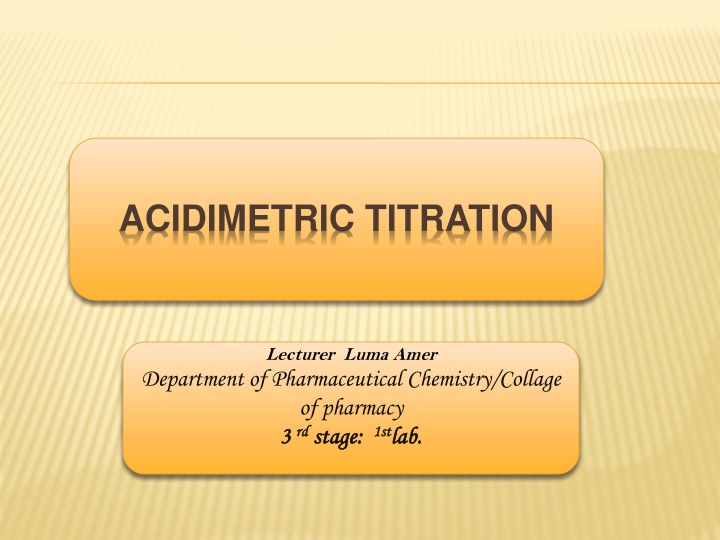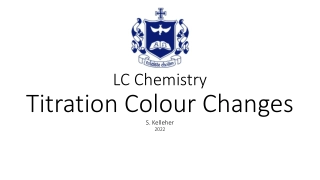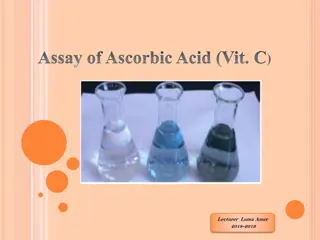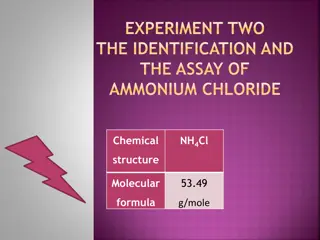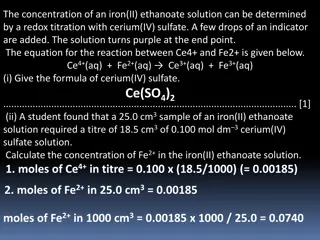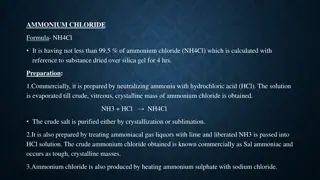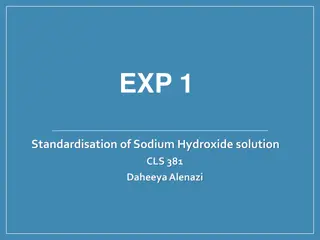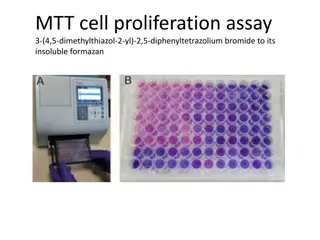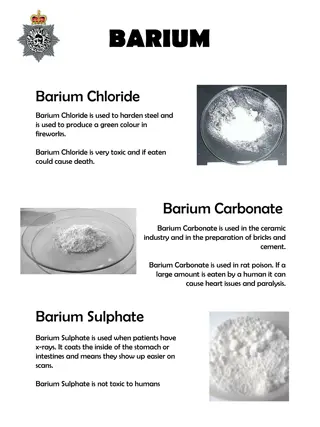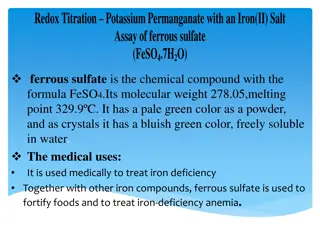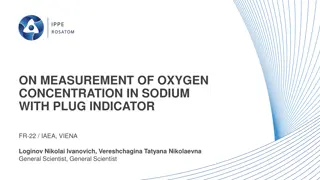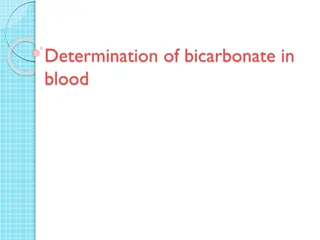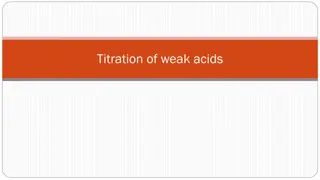Acidimetric Titration and Sodium Carbonate Assay
This article explores acidimetric titration theory and procedure, focusing on the assay of sodium carbonate using direct acid-base titration method. It includes principles, procedures, calculations, and applications of Na2CO3 analysis.
Download Presentation

Please find below an Image/Link to download the presentation.
The content on the website is provided AS IS for your information and personal use only. It may not be sold, licensed, or shared on other websites without obtaining consent from the author.If you encounter any issues during the download, it is possible that the publisher has removed the file from their server.
You are allowed to download the files provided on this website for personal or commercial use, subject to the condition that they are used lawfully. All files are the property of their respective owners.
The content on the website is provided AS IS for your information and personal use only. It may not be sold, licensed, or shared on other websites without obtaining consent from the author.
E N D
Presentation Transcript
ACIDIMETRIC TITRATION Lecturer Luma Amer Department of Pharmaceutical Chemistry/Collage of pharmacy 3 3 rd rd stage stage: : 1 1st stlab lab. .
ACIDIMETRIC TITRATION Theory of Theory of acidimetry acidimetry: : Acidimetry, essentially involves the direct or residual titrimetric analysis of alkaline substances (bases) employing an aliquot of acid and is provided usually in the analytical control of a large number of substances. Examples: (a) Organic substances: urea, sodium salicylate, diphenhydramine. (b) Inorganic substances : sodium bicarbonate, milk of magnesia, ammonium chloride, calcium hydroxide, lithium carbonate, zinc oxide etc. Direct titration method Residual titration method
ASSAY OF SODIUM CARBONATE Introduction: Sodium carbonate, Na CO , is a sodium salt of carbonic acid. Formula: Na2CO3 , Molar mass: 105.9885 g/mol a crystalline heptahydrate, which readily effloresces to form a white powder. Soluble in waterand very slightly soluble in alcohol, odorless powder that absorbs moisture from the air, has an alkaline taste, and forms a strongly alkaline water solution. Uses: for dermatitis s, mouthwash, vaginal douche; veterinary use as emergency emetic. In solution to cleanse skin, in eczema,to soften scabs of ringworm.
PRINCIPLE: Assay of Na2CO3 with what? Type of titration ? Direct acid base titration method . Against 1.5N sulphuric acid and by using methyl orange solution as indicator. . The equation of reaction is: Na2CO3 + H2SO4 Na2SO4 + H2O + CO2 Yellow (orange) pink ph= 4.6 ph= 3.2 Before titration at the end point
PROCEDURE: 1- Weigh accurately about 1.00 g, of sodium carbonate in a suitable beaker. 2- Dissolve it in 20 ml of water (DW). Notice: you will get turbid (cloudy) solution, Wait until it becomes clear. 3- Transfer 10 ml from previous solution to a conical flask. 4-Add two drop of methyl orange solution as indicator. 5- Fill the burette with 1.00 N sulphuric acids. 6- Titrate with 1.00 N sulphuric acids. 7- Repeat the titration method andtake the mean for the end point Values.
CALCULATION: % Na2CO3 = V x N x meq. wt. x 100 / wt of sample Each ml of 1 N sulphuric acid is equivalent to 0.053g of Na2CO3 Each ml of 1.5 N sulphuric acid is equivalent to 0.0795 gm of Na2CO3. Cognate Assays: Sodium bicarbonate; sodium salicylate tablets.
Na2CO3 + H2SO4 Na2SO4 + H2O + CO2 Yellow (orange) pink 1eq wt. Na2CO3 1eq wt. H2SO4 1 53 Na2CO3 1L (1000 ml )1N H2SO4 (standard sol.) 53g/1000 Na2CO3 1ml of 1N H2SO4 0.053g Na2CO3 1ml 1N H2SO4 * 1.5 N 0.0795 g Na2CO3 1ml 1.5N H2SO4 Notice: eq wt Na2CO3 = 106/2 =53
